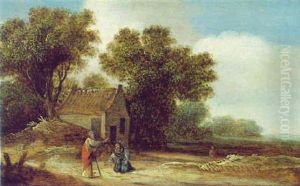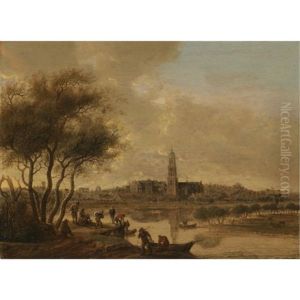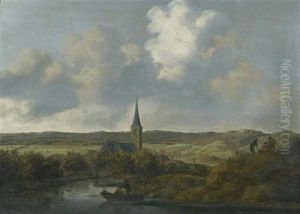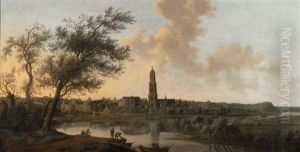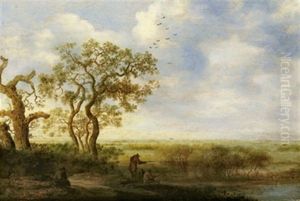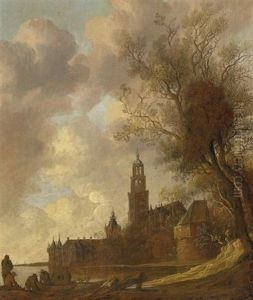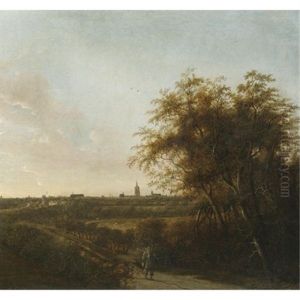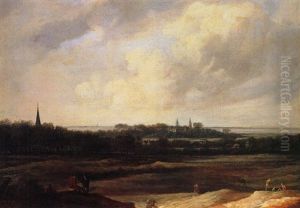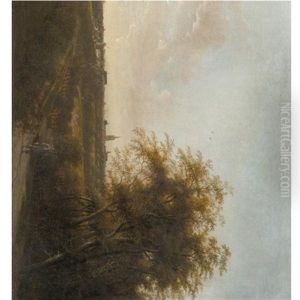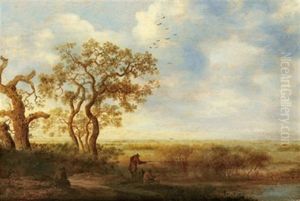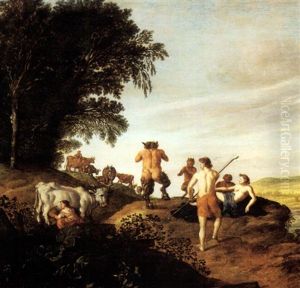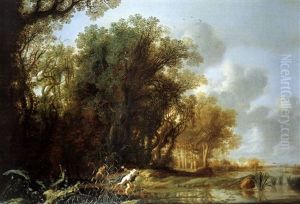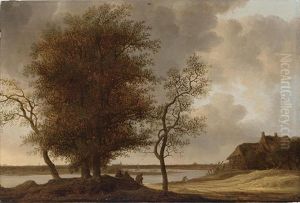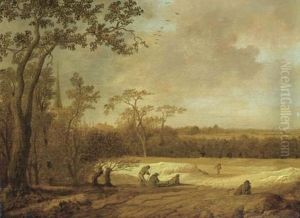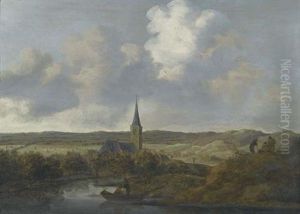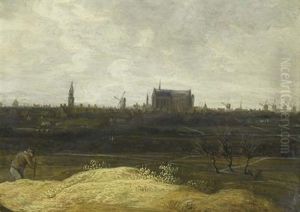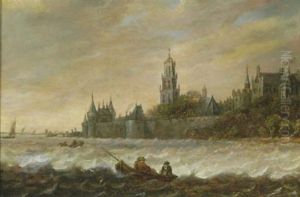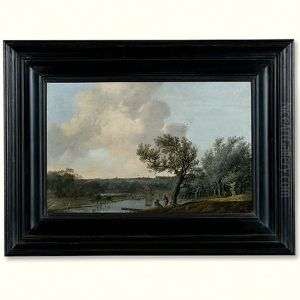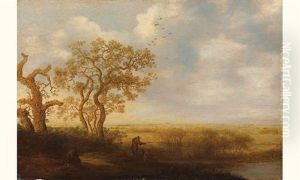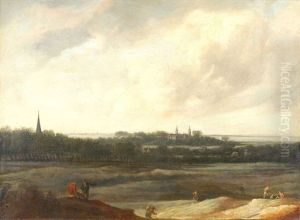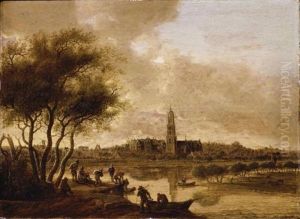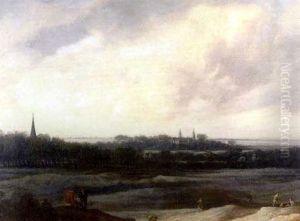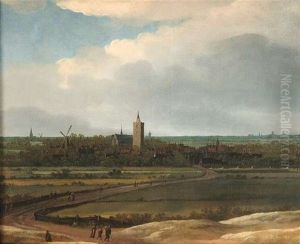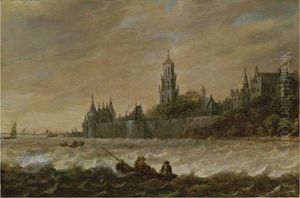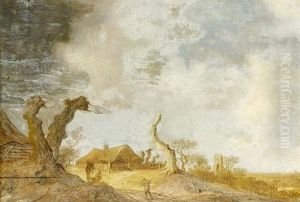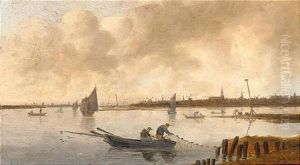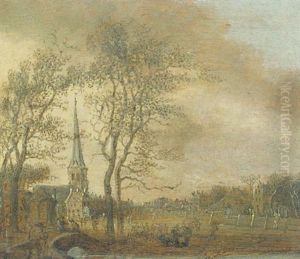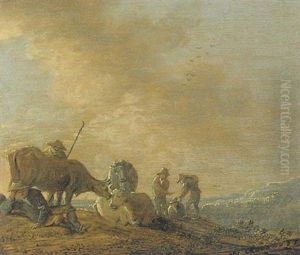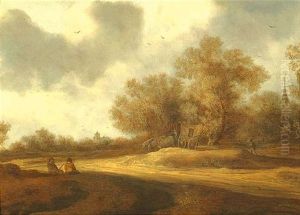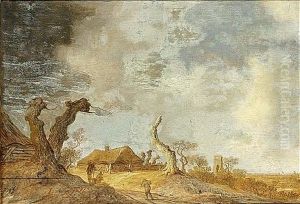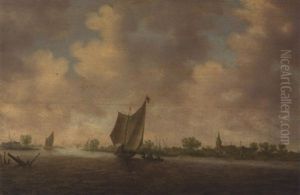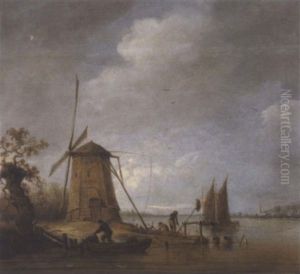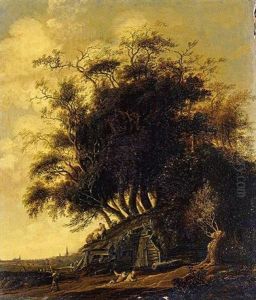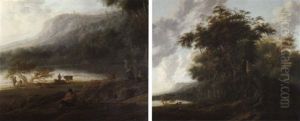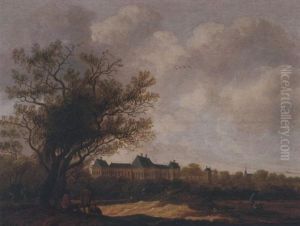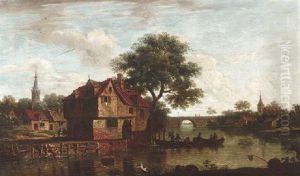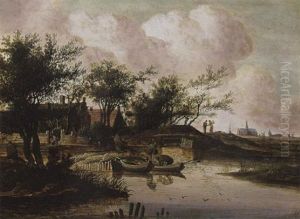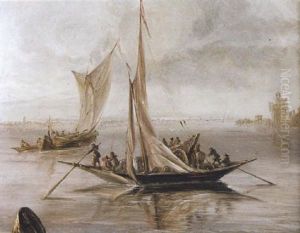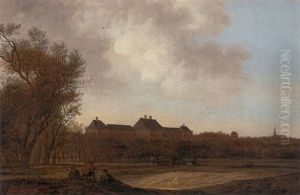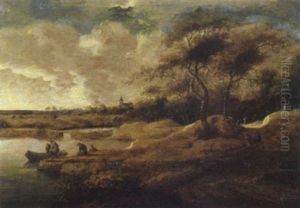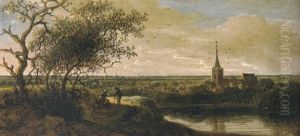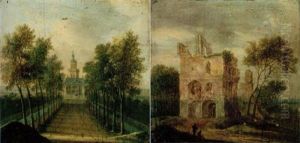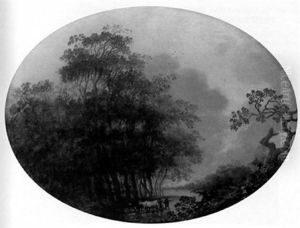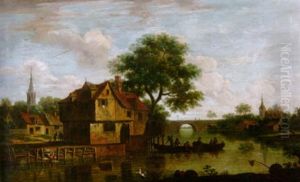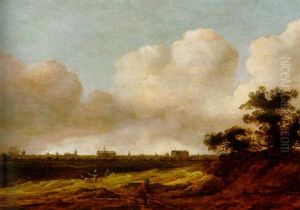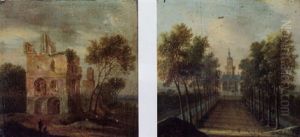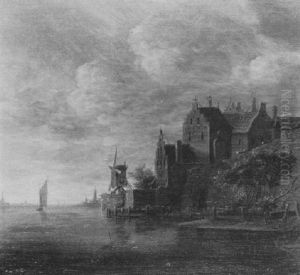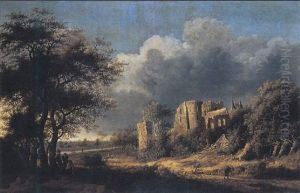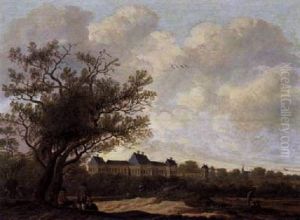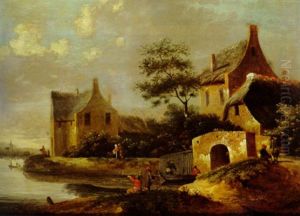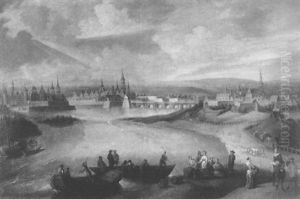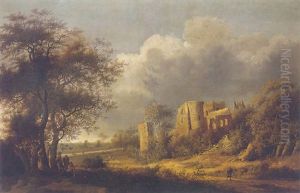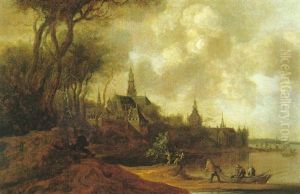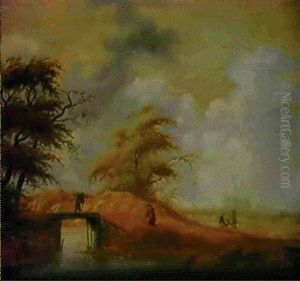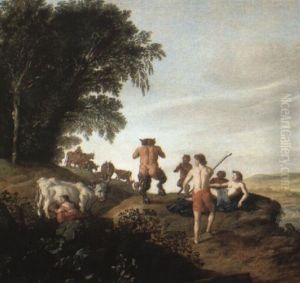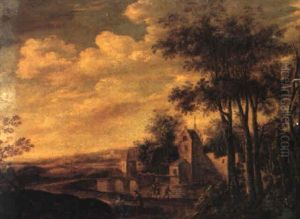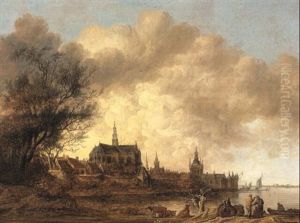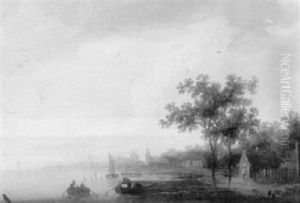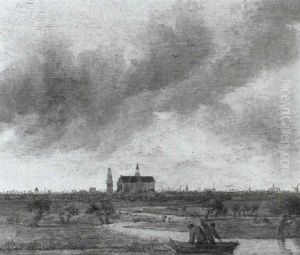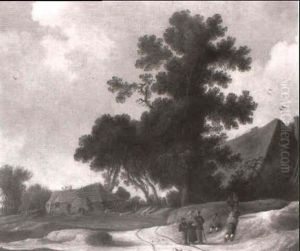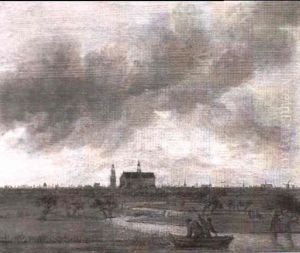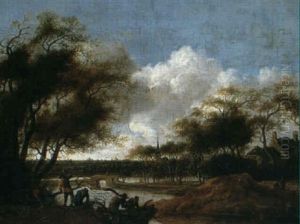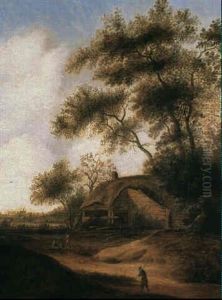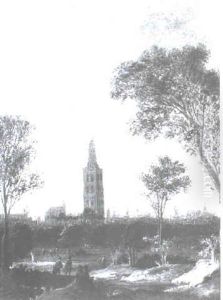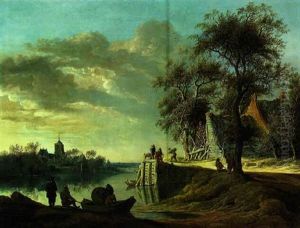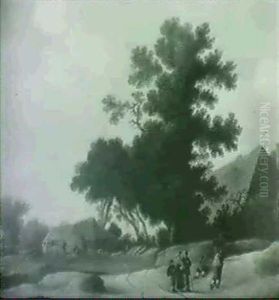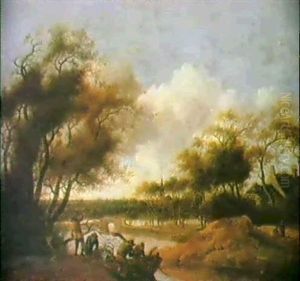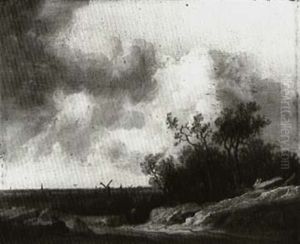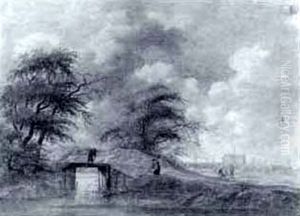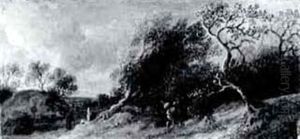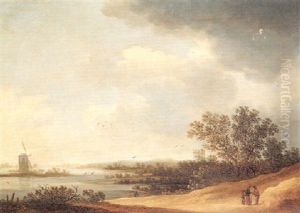Anthony Jansz van der Croos Paintings
Anthony Jansz van der Croos was a Dutch Golden Age landscape painter whose works are characterized by their calm, expansive views and delicate application of color. Born around 1606 or 1607, likely in Alkmaar, van der Croos's early life and training are not well documented, but he is believed to have been influenced by the Haarlem school of painting, which was prominent during his formative years.
Van der Croos specialized in painting tranquil river and canal scenes, often depicting the Dutch countryside with meticulous attention to atmospheric effects and the reflective qualities of water. His compositions frequently include small figures and boats, which add a sense of scale and life to the serene landscapes. Some of his works also showcase fortified towns and castles, indicating an interest in the relationship between human-made structures and the natural environment.
By the 1630s, van der Croos had moved to The Hague, where he became a member of the Guild of Saint Luke. His reputation grew, and he received commissions from members of the Dutch elite, including Prince Frederick Henry of Orange. The precision and clarity of van der Croos's work align with the broader aesthetic trends of the Dutch Golden Age, reflecting a society that took pride in its environment and commercial prosperity.
Despite his success, little is known about van der Croos's personal life, including his training and influences. However, his landscapes have been compared to those of Jan van Goyen, a prominent landscape painter of the time, suggesting that van Goyen's tonal approach may have played a role in shaping van der Croos's style.
Van der Croos's works were well-regarded during his lifetime, but after his death in either 1661 or 1662, his name fell into obscurity. It was only in the 19th and 20th centuries that art historians began to re-evaluate his contributions to Dutch landscape painting. Today, van der Croos is recognized for his skill in capturing the tranquil essence of the Dutch landscape and for his subtle yet effective use of light and color. His paintings can be found in various museums and collections, serving as a testament to the enduring appeal of the Dutch Golden Age of art.
